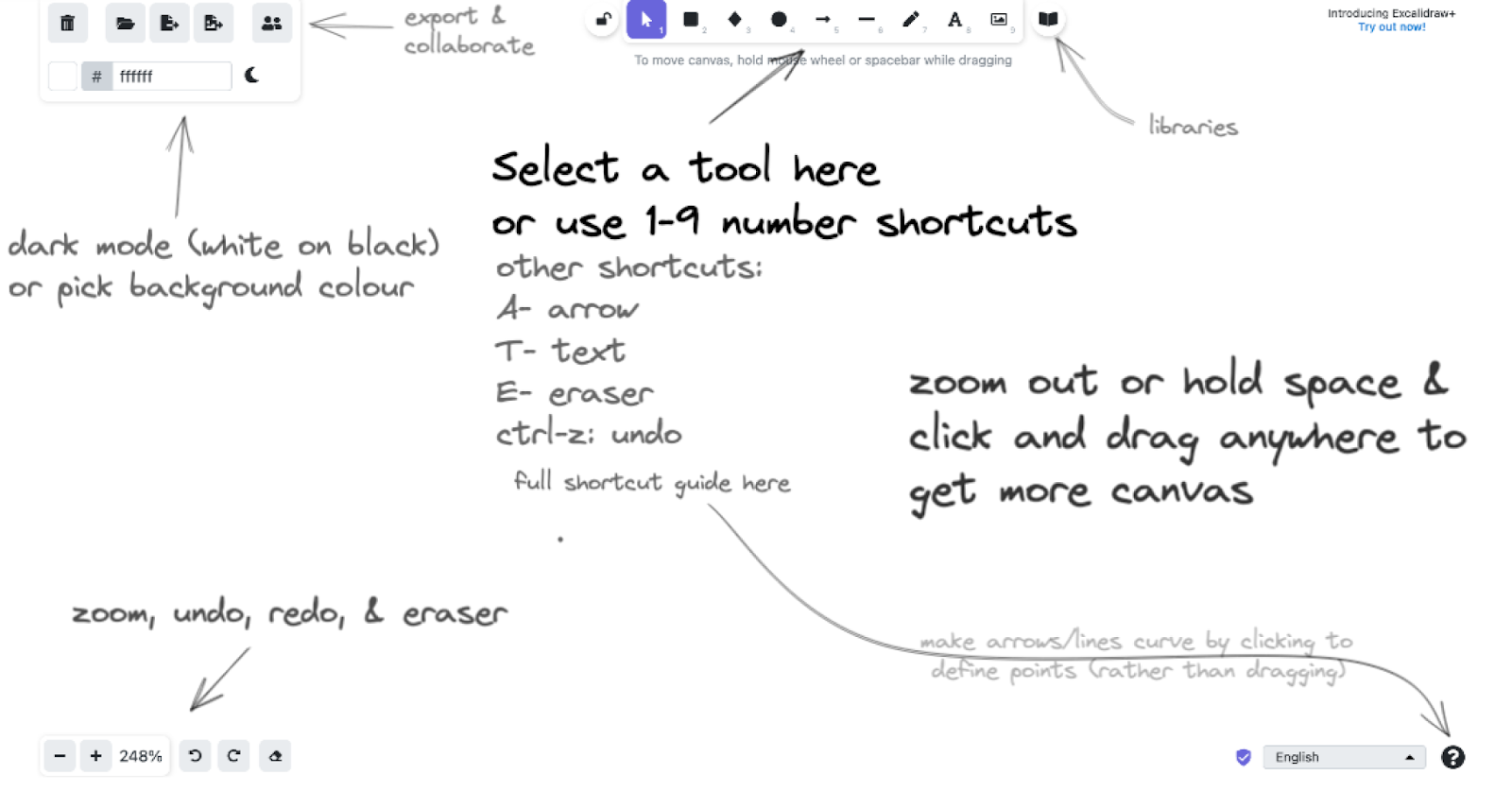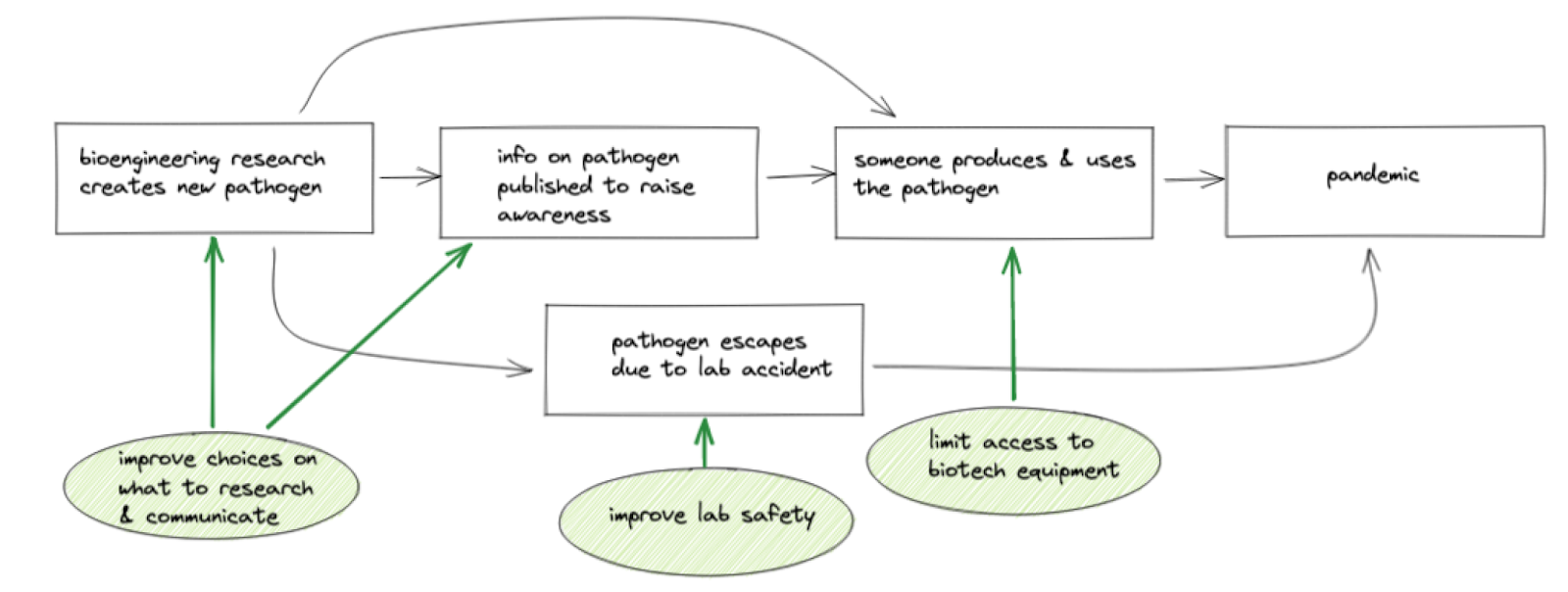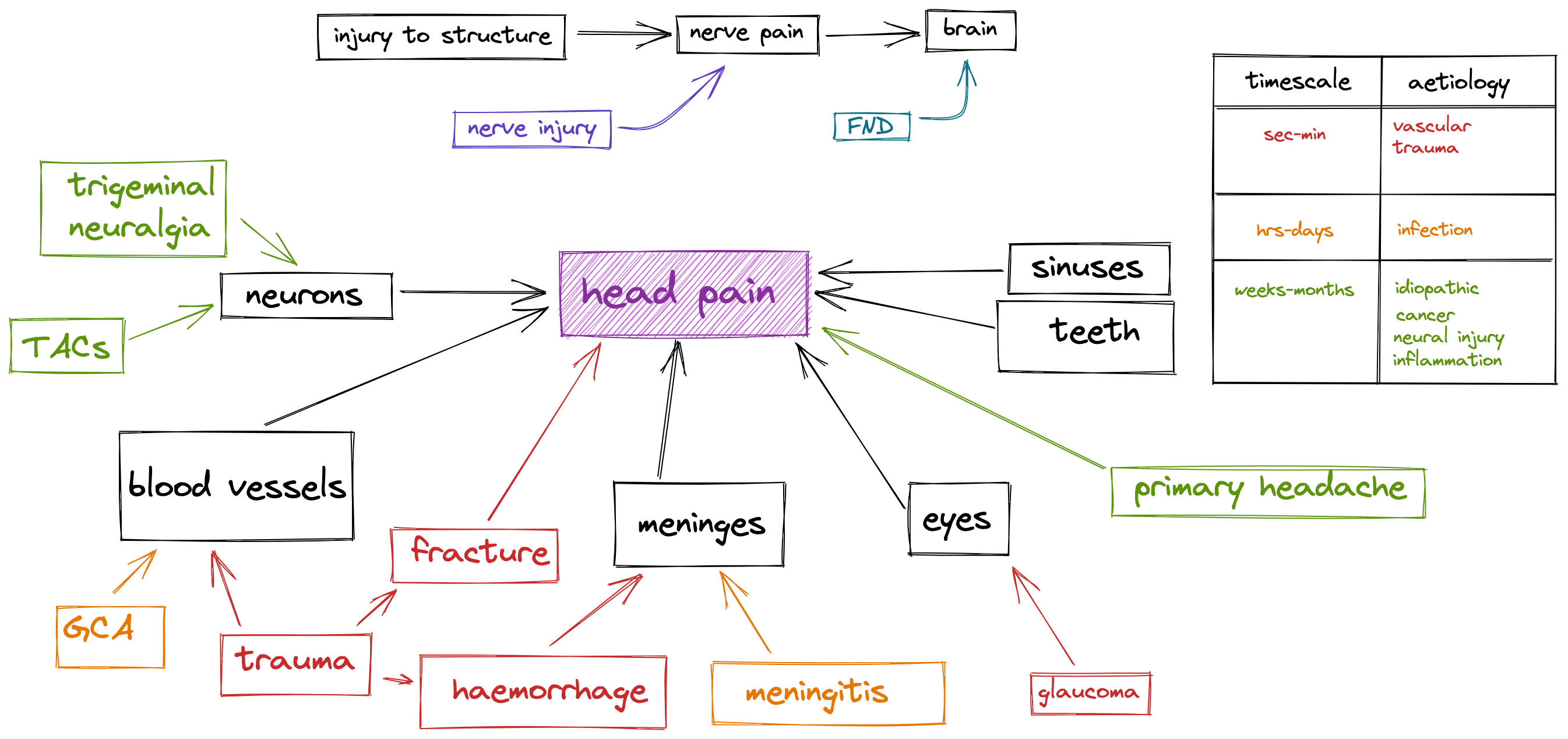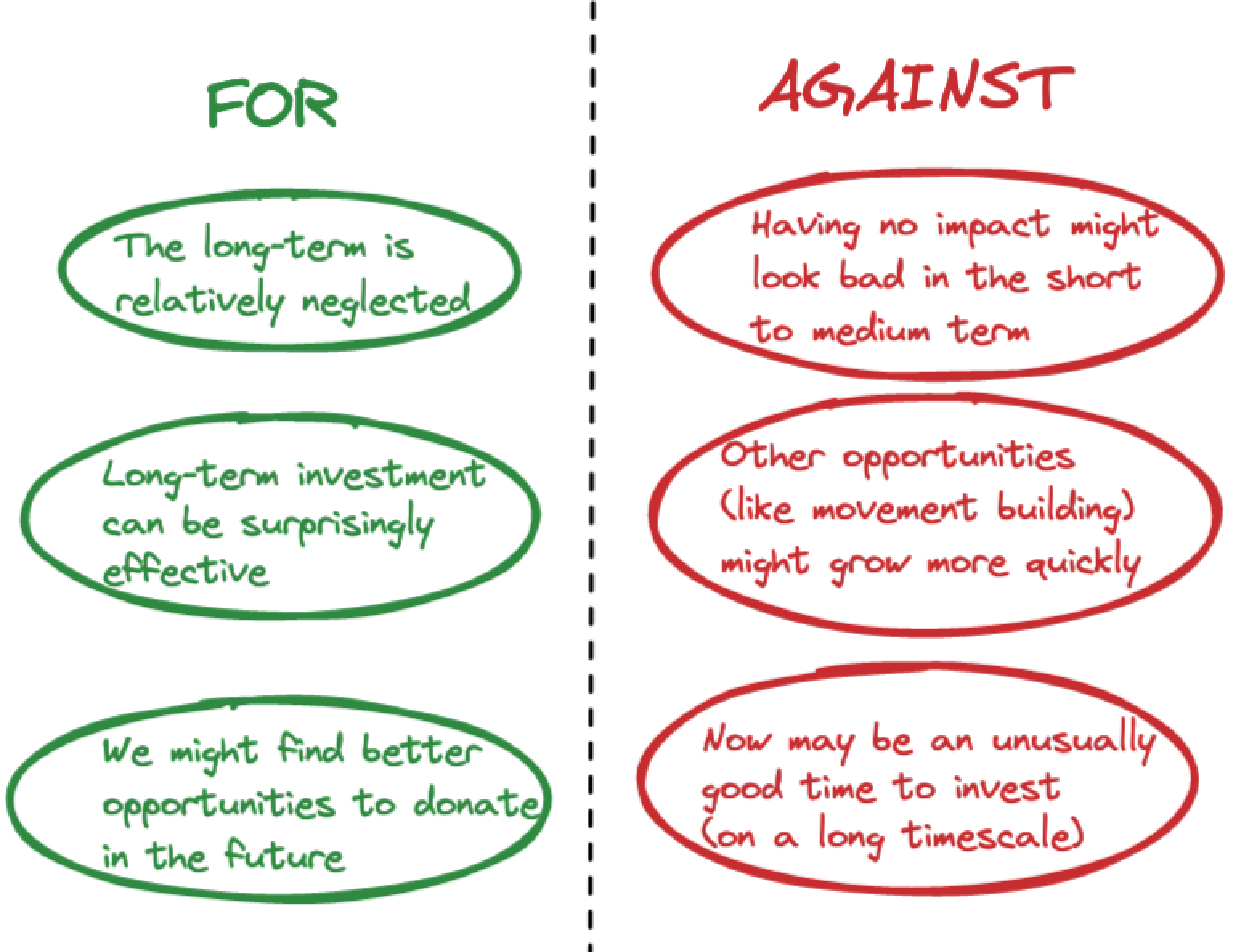Excalidraw is a collaborative, shared whiteboard for typed text and sketching. It's really useful for summarising notes & making diagrams for forum posts; it's one of the tools I've used a lot to make these tutorials! Its key attractions are simplicity and easy collaboration. It’s designed for quickly creating simple graphics, and has a ‘sloppy/whiteboard’ style.
This post is a simple tutorial for how to use excalidraw. The landing page also has a pretty good introduction to the basic features.
When can Excalidraw be useful?
- Visually summarise an argument
- Summarise notes on a topic
- Build a logic model to help you think through a problem
- Have a debate over zoom, but draw diagrams for one another in real-time to help explain your point
- Represent the AI governance or whole AI safety community diagrammatically
Video Guide
Text Guide
Basic Features

If you’d prefer a worked example, you’re looking at one! The above image was made in Excalidraw. Here’s another:

The point here isn’t that this is a perfect, wonderful diagram that’s much better than the original– it isn’t. The point is that this took 5-10 minutes to make without having to spend time learning a complex tool, and could be done collaboratively.
Collaboration & Export
In the top right box, you can export your whole drawing either as a file to load back into Excalidraw or as an image. You can press the ‘Live Collaboration’ button to start a session.
Once you start a session, you can copy a link which gives anybody access to real-time collaboration on your current board.
When any member leaves the session, they ‘take a version with them’, which they can keep editing locally.
If you want to keep your whiteboard and re-use it later, you can save it either as an Excalidraw file (editable later) or an image file.
Libraries
You can also import libraries of icons made in Excalidraw using the book icon at the top of the screen (to the right of the other tools). There are only a few libraries available right now, but it can be useful for common icon sets.
Worked Examples
These are both examples I actually used! The first I made live with somebody while I was running a tutorial on the topic, the second I made as a quick summary for a discussion group. I've linked the source for the second, but the first was from the top of my head.
Summarise a topic (medical causes of headache):

Summarise a topic (patient philanthropy):

Personal Thoughts
I really like Excalidraw! It's a very polished implementation of a quick sketching tool, and the collaborative features, like the rest of Excalidraw, work exactly how I'd want them to without any fidgeting.
At the moment, the icon libraries feature is pretty sparse, consisting mostly of UI and software architecture symbols, but there's nothing stopping you publishing EA-related symbol libraries!
I was mildly irritated there were no options to save canvasses in the web app, which it turns out is behind a 7$/month paywall. This might be worth it if you're using it a lot, but the offline saving options are pretty comprehensive. Maybe consider it to support the tool's continued existence.
Finally, Excalidraw is a somewhat limited tool not suited to really complex diagrams, but this isn't really its intended purpose. If you want to make more precise or detailed diagrams, I can personally recommend Affinity Designer, and GIMP is a reasonable free alternative. This space is pretty saturated, but they all (to my knowledge) have a much steeper learning curve than Excalidraw, and I'm not aware of more powerful tools with equivalent live collaboration.
Try it Yourself!
Try making a sketch of how your job leads to impact! Share it in the comments, so people can compare different jobs & different styles of diagram.
We'll also be running a session on Monday the 30th at 6pm GMT in the EA GatherTown to discuss Excalidraw and do a short exercise!
On Monday: a post discussing Squiggle, a coding language for model-building!

There also exists an Excalidraw plug-in for Obsidian which I personally found very valuable.
Hi Nico,
You might also want to try the recently released Obsidian Canvas. I've found both Excalidraw and Canvas to be phenomenal (and free) diagramming tools.
I have a list of other diagramming tools on my public Zotero library here.
Excalidraw + Obsidian's infinite canvas core plugin is truly a delight that I'm excited to see develop further. Lots of possibilities for better epistemics/PKM, and even more incredibly underrated for public sense-making/social epistemics in Obsidian.
I bookmarked it and found a chance to use it already today! In general, I appreciate finding out about tools for rational discourse enhancement. Encouraging others to post them even if they don't get too many upvotes.
As a meta point for these types of tutorials, I would recommend a short section on alternative tools with a short discussion of pros and cons for each alternative.
Right now, this feels more like an advert for excalidraw rather than an open exploration of the options out there.
Yeah, I think you're right and this was a mistake of mine. I picked this list via generating possibilities from friends, Twitter and my own use, then asking for feedback on an epistemics slack, and primarily picking the most easy-to-use-seeming ones in each category (Edited to add: and because I liked the idea of not necessarily picking the absolute best things but just getting more of this kind of thing used), but it would have been worth doing a little digging into competitors in each to make sure we weren't missing some good things + being able to give more context.
This is a really great point! Thank you for raising it. I'll see about adding it to future posts.
Does anyone know how this differs from similar-sounding options like Miro, Mural and Lucidspark?
I'm doing AGI Safety Fundamentals right now and they use Miro, and I like it a lot; for the purpose of running a class, I'd use Miro over Excalidraw based on my current experience with both. For more general diagram-making, I'm not yet sure, but if you end up having thoughts we'd love to add them to the post.
Yep, Excalidraw is great! I also used it to make this post:
https://www.lesswrong.com/posts/TvrfY4c9eaGLeyDkE/induction-heads-illustrated
Great tool; I've enjoyed it and used it for two years. I (a random EA) would recommend it.
Would recommend it, I use it for most of my diagrams & I like it enough to have gotten a premium subscription.
I should clarify the inspiration to pick excalidraw originally came from Nuno's recommendation, I then played with it and liked it, just so that people don't double update :)
I really love this piece of software, but the only thing that really gets me is the inability to take hand-written sections of notes. sometimes i just need to sketch a graph or a visual representation of something, and excalidraw is really too clunky for my experience.